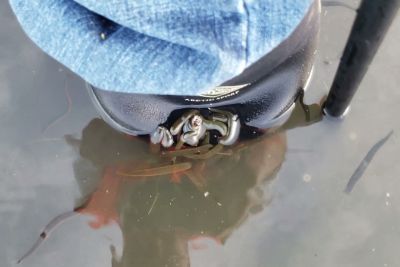

You probably think of earthworms as living underground. “We think the changes to native habitats will be similar to other earthworms but even more dynamic,” says Herrick. The jumping worm, if established in the Upper Midwest, brings new threats. “When they are introduced, they make a host of physical, chemical and biological changes to the soil environment.”Įssentially, worms turn the forest floor - a complex community of plants, invertebrates and microbes – into a completely different habitat. “Earthworms change the environment to suit their needs,” says Brad Herrick, ecologist and research program program manager at the University of Wisconsin-Madison Arboretum.

This may be good in your backyard garden plot, but it’s not in the northern forest. The hype is true: earthworms cycle through a lot of refuse, and fundamentally change the soil. The common nightcrawler - familiar to anyone who has ever cast a bobber and hook - is a European species.Įarthworms have also spread into the northern habitats where worms have been absent for thousands of years. Even areas with native earthworms have largely been taken over by non-native varieties. And so the worms have been spread far and wide. They indeed use them by the millions for fishing, and for composting, and to help gardens grow. As such, forests and other habitats have evolved without them.īut people love earthworms. Overlooked in all this earthworm love is an important fact: in a significant portion of the North American continent, no native earthworms have existed since before the Ice Age. The humble earthworm is a creature to celebrate. You probably learned about the wonders of earthworms at an early age. Why are they so damaging? And is there anything we can do to stop them? Why Much of What You Know About Earthworms is Wrong In the forests and prairies of the Upper Midwest, the jumping worm could significantly alter habitats and decrease biodiversity. In 2013, species from the genus Amynthas were confirmed for the first time in the Upper Midwest, at the University of Wisconsin-Madison Arboretum. Jumping worms, consisting of various non-native species from multiple genera, have become established in a number of eastern and southeastern states. Try to catch it, a piece of its tail will detach in your hand - still wriggling as you hold it.īut put aside the creepy factor: jumping worms may be the next big threat to northern forests. To do this, you must earn in-game cash to spend it on cosmetic items.Disturb a jumping worm and it’s like a nightcrawler on steroids: It violently writhes on the forest floor, recalling a snake in a bad horror movie. Also, there is multiplayer available for up to four players on the same device with the alternate right of turn. As well as 15 challenges without complete courses.
#Worms crazy golf bug series
Visually, the game is reminiscent of the game series of the era of 2D Worms 2: Armageddon and Worms Reloaded.įor a single completion, there are 3x 18 holes courses all with its own visual style and challenges. Sometimes on the way, there are explosive sheep that explode to shreds in a collision and other obstacles to overcome. The goal is to drive the ball into the hole. The player takes control of the worm, which appears on the 2D battlefield.

The game is a continuation of the mobile-exclusive Worms Golf and adaptation of the format on the PC. The goal is to get into the hole with fewer strikes. Now the main goal is not to destroy all of the enemy’s worms. Worms Crazy Golf - it's a familiar mix of the main series gameplay and classic golf transforming the latter into turn-based madness. A golfing spin-off in the famous Worms series.


 0 kommentar(er)
0 kommentar(er)
